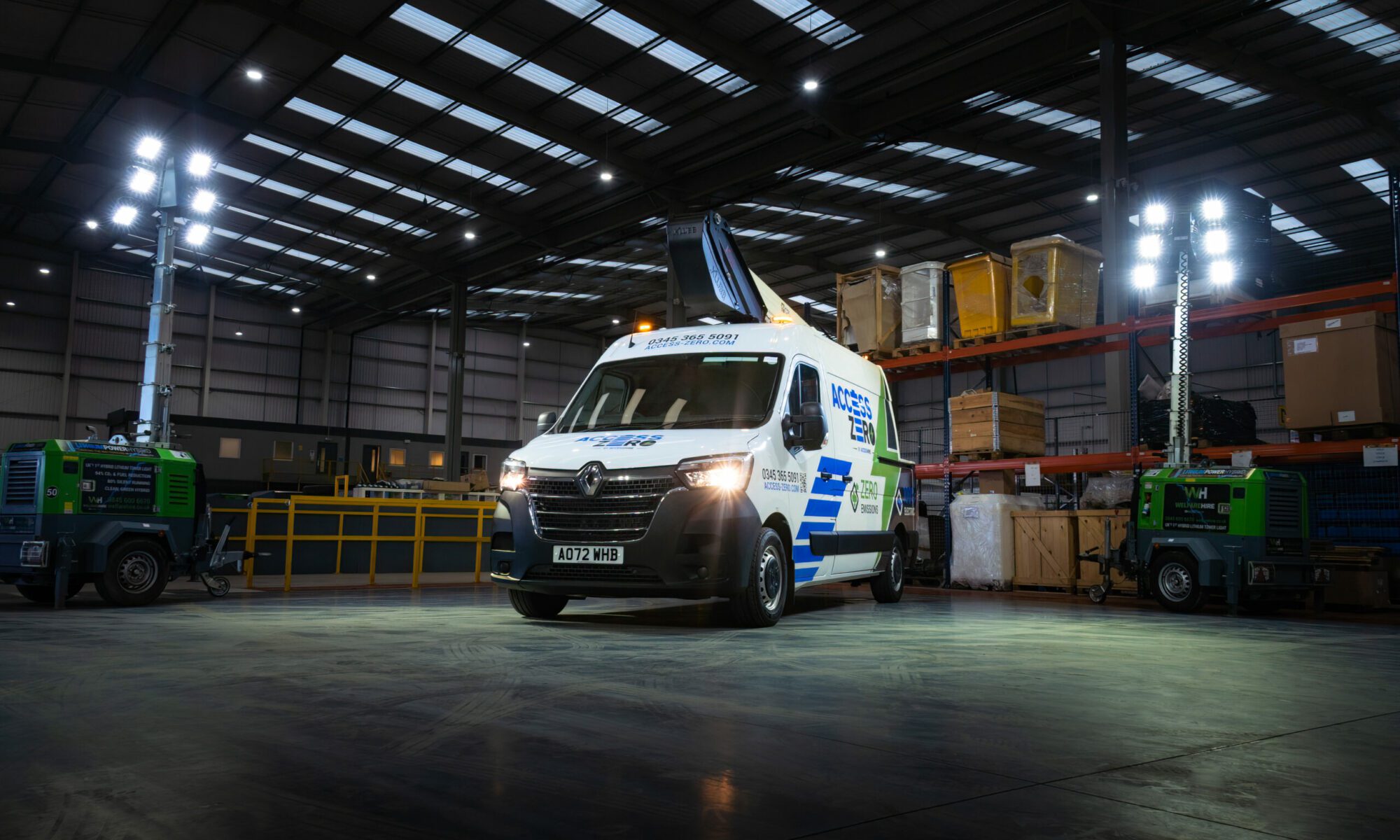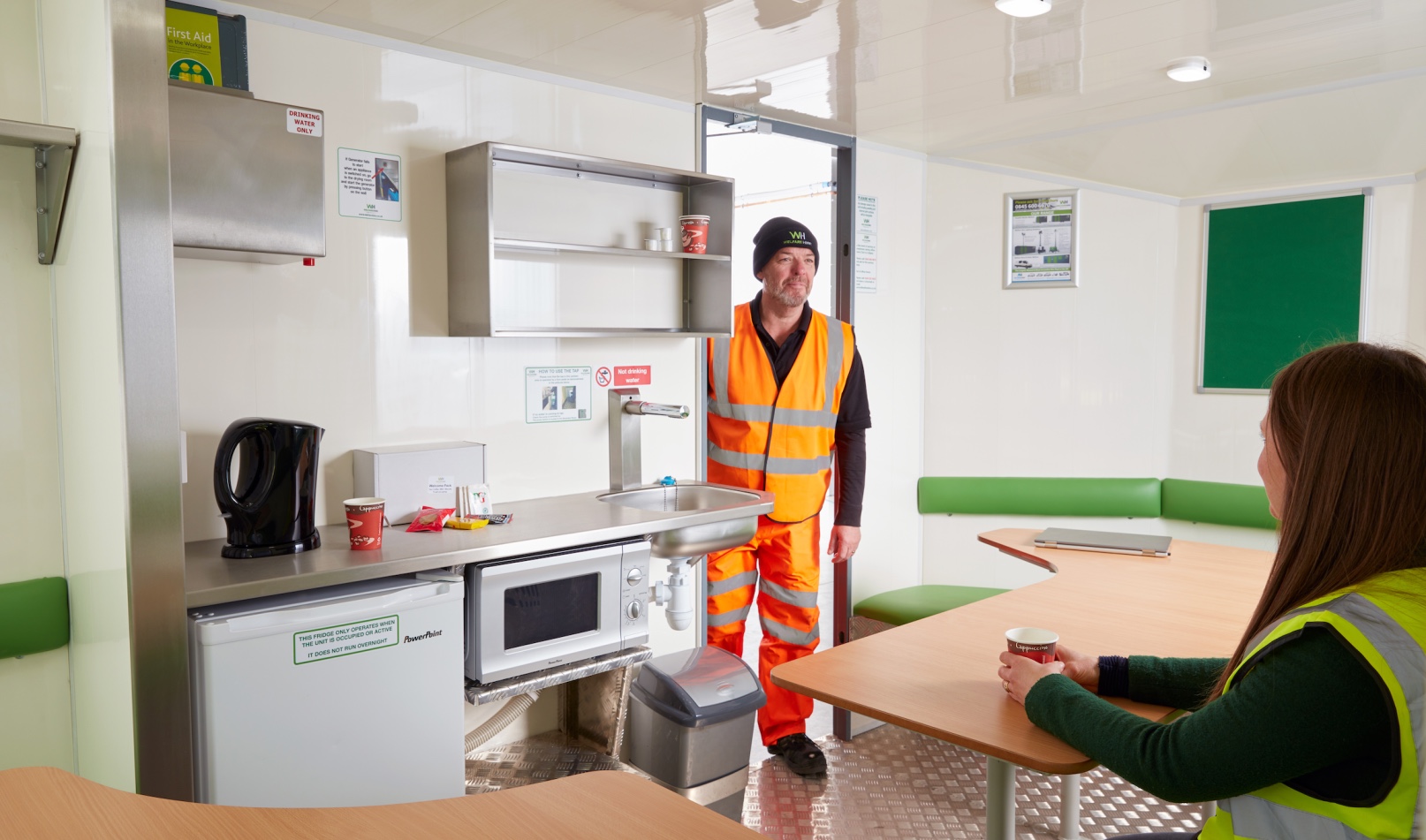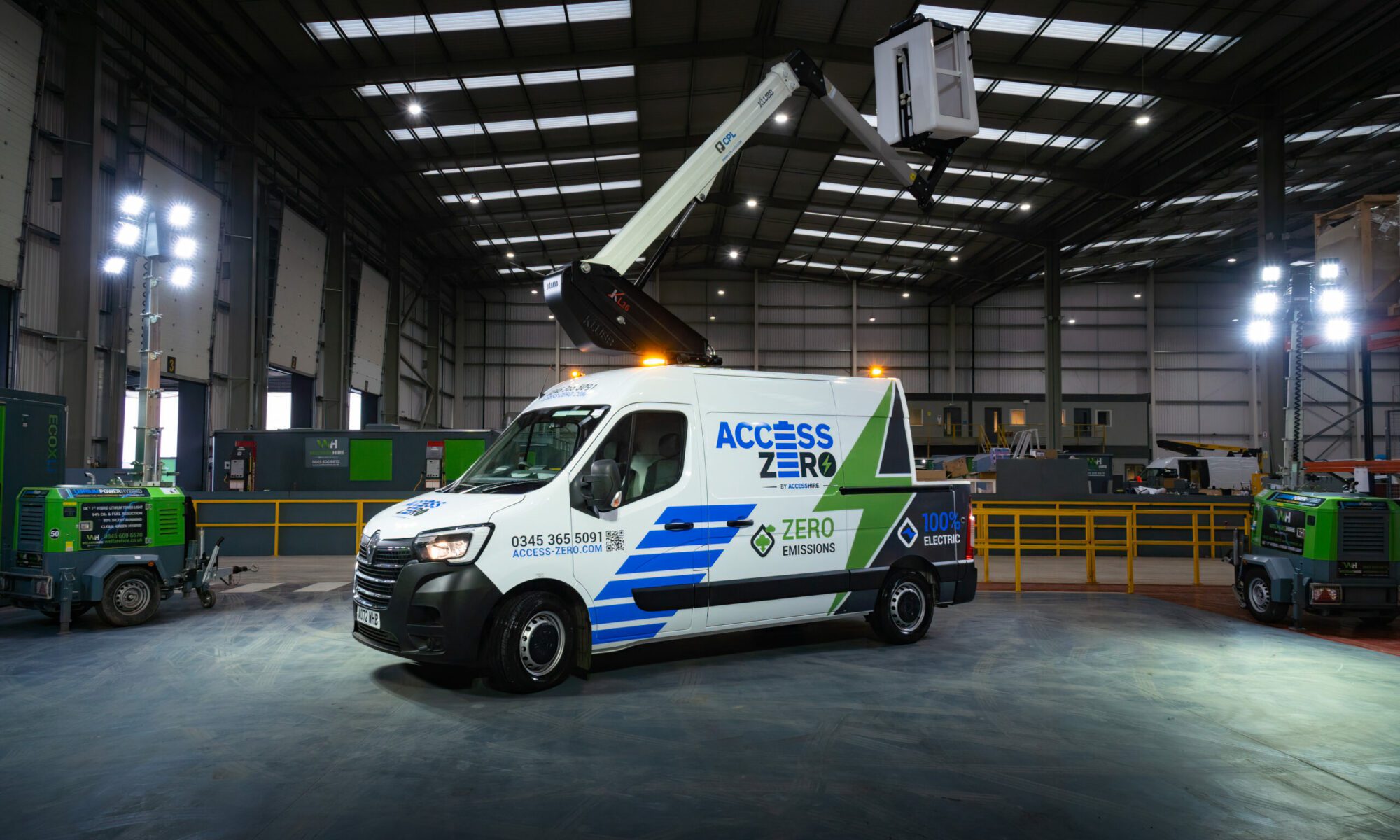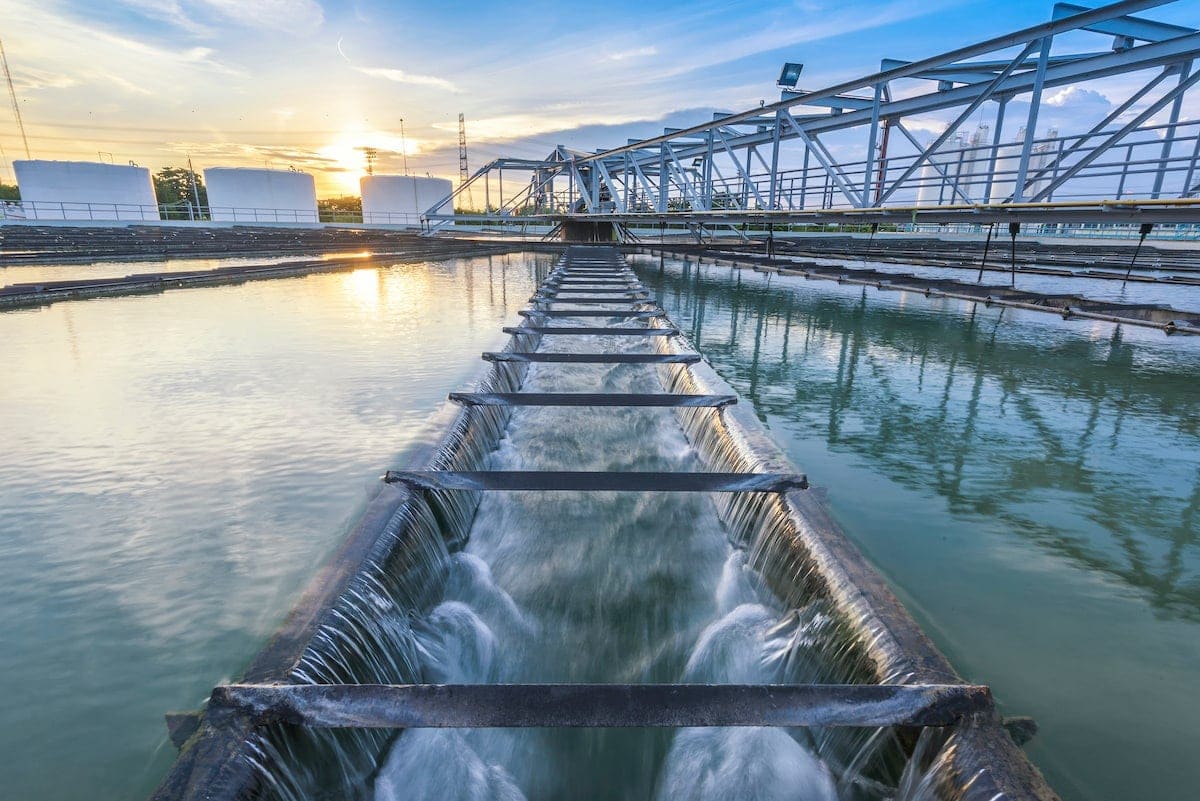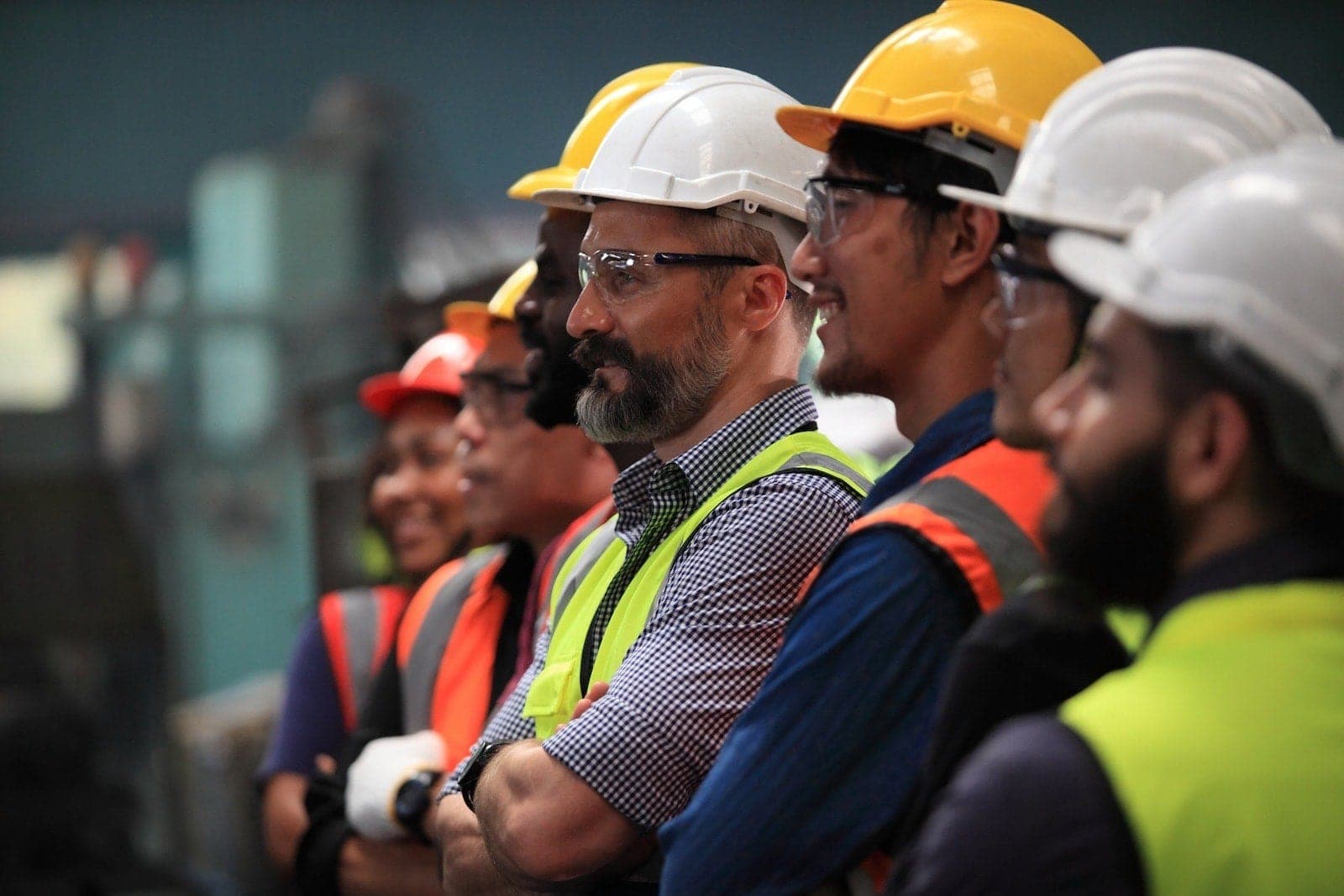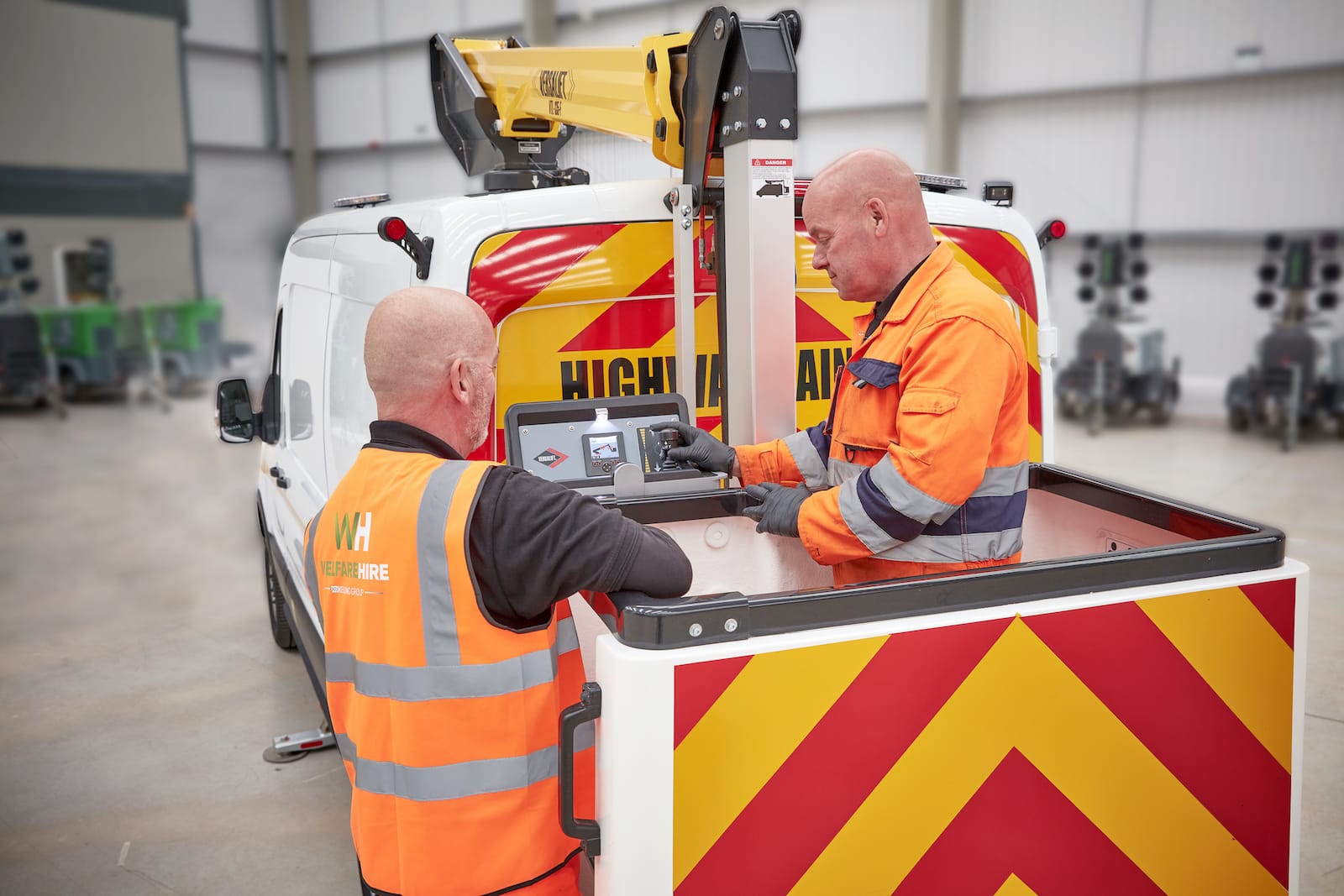UK sales of Electric Vehicles (EVs) hit an all-time high last year.¹ But we are still just scratching the surface of this major shift in transport and technology.
Fully-electric Van Mounted MEWPs are now available to lease and hire for businesses across the country, and this is expected to have a significant impact on construction and infrastructure projects in several ways.
Here are four core benefits businesses can expect:
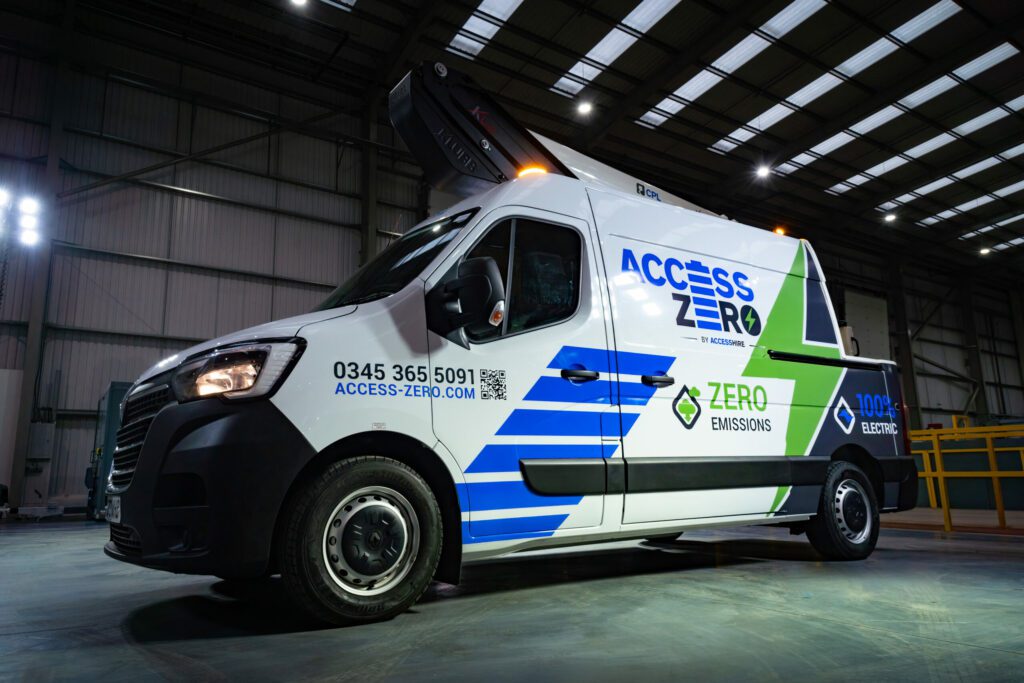
1. Reduced emissions
The most commonly cited benefit of EVs is their environmental impact. Even accounting for the generation of electricity and battery manufacturers, going electric dramatically reduces the amount of GreenHouse Gas (GHG) emitted through the lifecycle of each vehicle.
This is particularly true for fully-electric Van Mounted MEWPs. Each vehicle produces a large annual reduction of CO₂ every year and across an entire fleet, this equates to an enormous improvement to your carbon footprint.

2. Fuel savings
A common misconception about EVs is that they are more expensive. While brands like Tesla have created the perception that going electric is costly, switching to fully-electric Van Mounted MEWPs can actually result in a long-term cost saving.
Events from last year made clear just how expensive traditional fuel sources can be – not to mention highly volatile. Electricity is far cheaper and businesses can expect to save a significant amount per year on fuel.
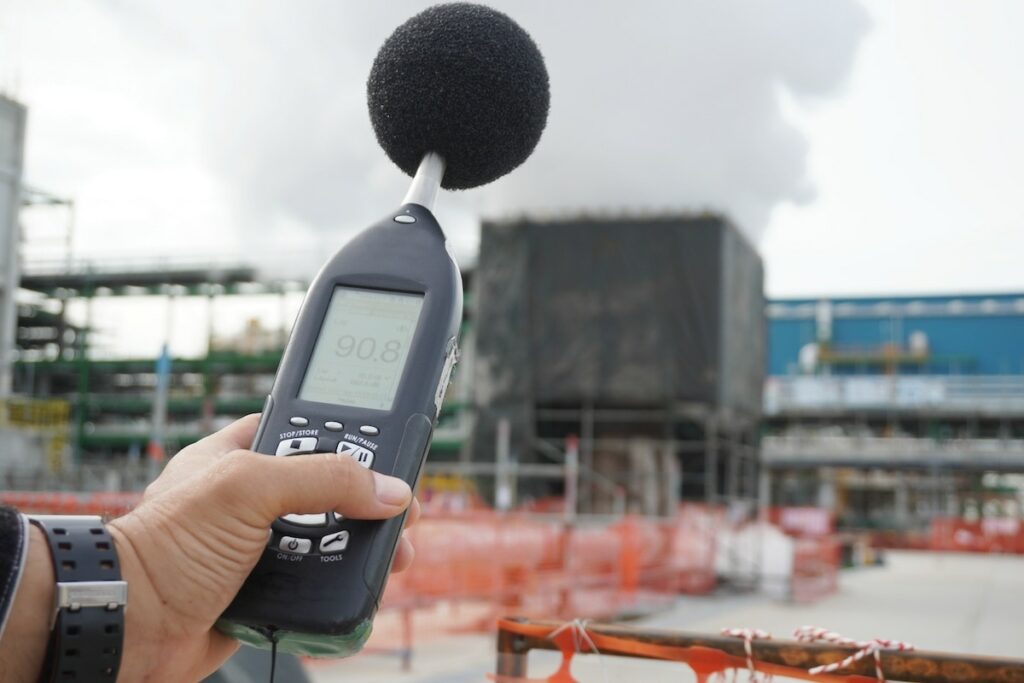
3. Noise
Noise pollution is a major issue for the construction and infrastructure sectors – especially when working on inner-city projects. Heavy vehicles are a large contributor to that problem, but few projects can run successfully without them. This ultimately limits the times when projects can operate at full capacity.
Electric Van Mounted MEWPs provide a powerful solution to this problem. They run completely silently, thus entirely removing one of the biggest sources of noise pollution from your site – and enabling work during the night and early morning in areas where noise restrictions are strict.
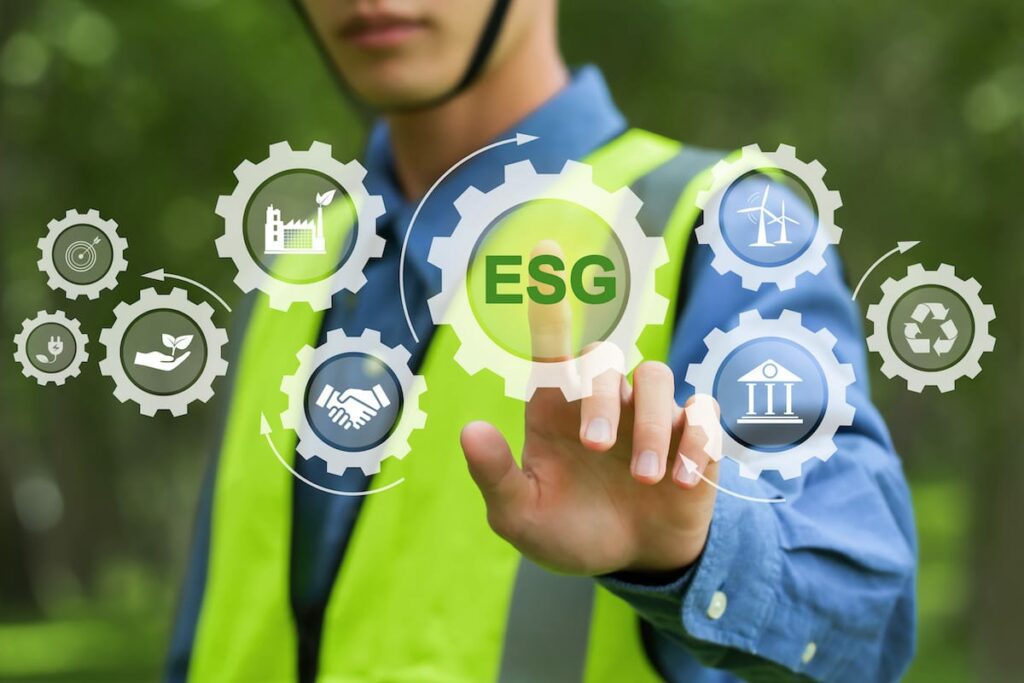
4. Improved ESG
Whether you operate in the public or private sector, there is growing pressure to demonstrate the steps you are taking to improve your sites’ Environmental, Social and Governance (ESG) scores. Opting for fully-electric Van Mounted MEWPs is an easy win in this regard, providing a large improvement that can be actioned immediately.
How welfare units can improve onsite wellbeing and support staff retention for the rail industry
As the rail industry grapples with a skills crisis, organisations are beginning to recognise the importance of wellbeing and inclusion onsite. A 2021 Rail Safety and Standards Board (RSSB) survey found that over 40% of rail workers were suffering from a mental health condition, which had a “hugely detrimental effect on their employers”, impacting cost, performance and safety. RSSB added that, while the COVID-19 pandemic likely contributed to this crisis, more must be done to support staff – with a focus on “workplace factors” and helping individuals who might be “socially excluded”.
Wellbeing on Rail construction sites
In this way, employee wellbeing is paramount on rail construction sites, with mental health and burnout an important consideration.
And improving wellbeing isn’t just important from a duty-of-care perspective – it can also help employers to recruit diverse new talent, retain existing staff, and boost productivity. Indeed, RSSB reported that “sickness absence was five times higher (in rail workers) than the general population pre-COVID and six times higher than the general population during the pandemic” – figures that will undoubtedly impact bottom lines.
Add to this the fact that rail still has a diversity problem (a 2021 Network Rail report found that just 3.9% of operations and maintenance staff are women), and it’s clear that more can be done to make onsite environments safe, inclusive and positive.
Modern Welfare facilities improve wellbeing
While onsite facilities (particularly welfare units) might seem like little more than a practical necessity, they can have a dramatic impact on wellbeing. Indeed, for team members working outdoors, a warm, dry and comfortable space can help make a big difference.
Traditional and older welfare facilities are often poorly maintained or lacking the space and comfort to allow workers to take a proper break onsite, contributing to the lack of support many feel at work – these are the “workplace factors” that, if improved, could transform culture and conditions onsite.
As such, it pays to invest in quality welfare units; with access to additional space, modern kitchen appliances, hygienic non-chemical water-flush WC facilities and enough power outlets, employees will be able to relax and recharge during downtime. Providing the right facilities could even encourage them to take breaks more regularly.
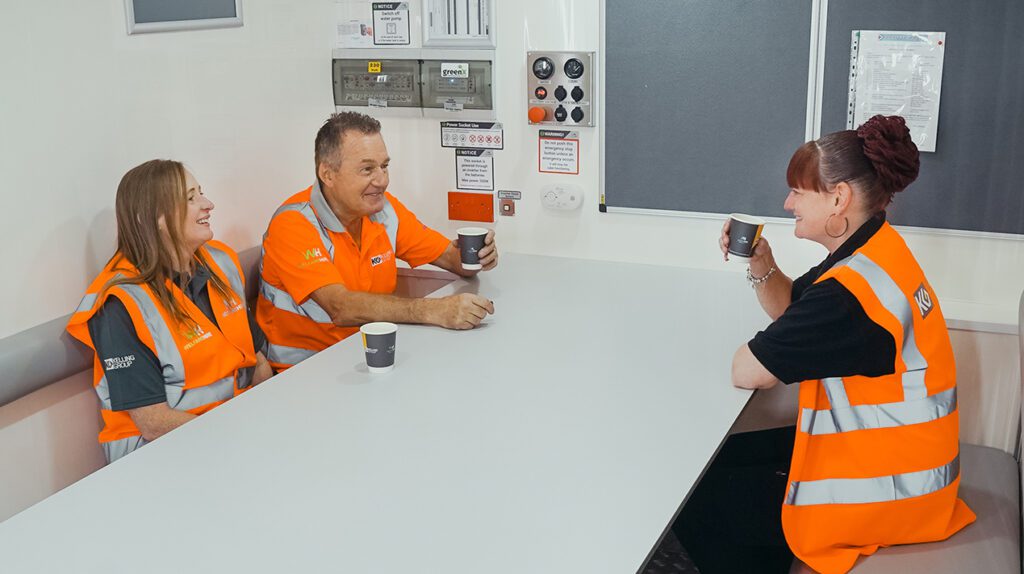
Larger, welfare spaces promote positive culture
Comfortable, spacious welfare units (like Welfare Hire’s modern design range) also encourage workers to come together, sharing their experiences and building relationships. This is particularly important for new starters or those with disabilities – who, in RSSB’s words, are at greater risk of being “socially excluded.”
In its survey report, RSSB added that only half of those respondents suffering from a mental health condition sought help. Well-designed welfare units provide a safe, quiet space in which employees can talk and open up – whether that’s to a colleague or line manager.
Indeed, the right welfare equipment won’t just make workers more comfortable – it could help to foster a more positive culture onsite, boosting morale and improving staff retention rates.
Improving inclusivity onsite
Providing better welfare facilities could even help to improve inclusivity onsite. Higher-end units often feature separate, hygienic toilets (Welfare Hire’s units are fitted with ceramic water-flush WCs) or changing rooms for privacy.
Investing in providing the most modern and innovative welfare will send an important message to the workforce – this in turn creates ripple effects, leading to improvements in productivity, employee inclusion, retention and overall staff morale. And, with major projects like HS2 set to create thousands of new jobs in future, building a motivated and diverse workforce is more important than ever.
While improving wellbeing and inclusivity is a complex undertaking, the right welfare facilities can help to make rail construction sites a more positive, more inclusive and safer environment for workers. This, in turn, could have a positive impact on recruitment and staff retention – areas of focus for the industry, now more than ever.
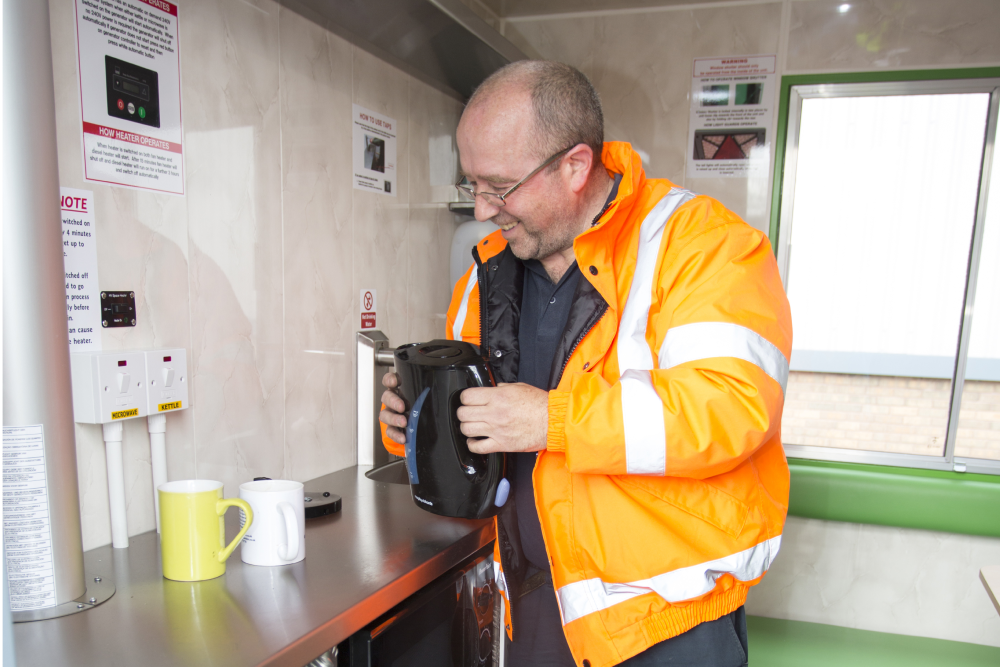
Article published in association with Rail Business Daily

Three Important Ways Electric Vehicles Help Local Authorities Hit Sustainability Goals Faster
Sustainability is top of the agenda for most local councils. But delivering sustainable infrastructure projects is easier said than done.
Despite the recent announcement of extra Government funding ¹, the process of planning, managing and delivering sustainable infrastructure is a huge challenge. Tier 3 emission accounting means leaders need to implement green alternatives across their entire supply chains – and this creates a serious problem for many councils.
A gap in the sustainability market
Key infrastructure projects require strategic equipment like Van Mounted MEWP. But these are generally seen as a big source of carbon and noise emissions. Today, fully-electric alternatives exist – they have just not been readily available to local authorities.
Access Zero offers the UK’s first fleet of fully-electric Van Mounted MEWP, enabling infrastructure projects to run more smoothly and with far less impact to the environment.
Here are three ways electric Van Mounted MEWP help local councils achieve their sustainability goals:
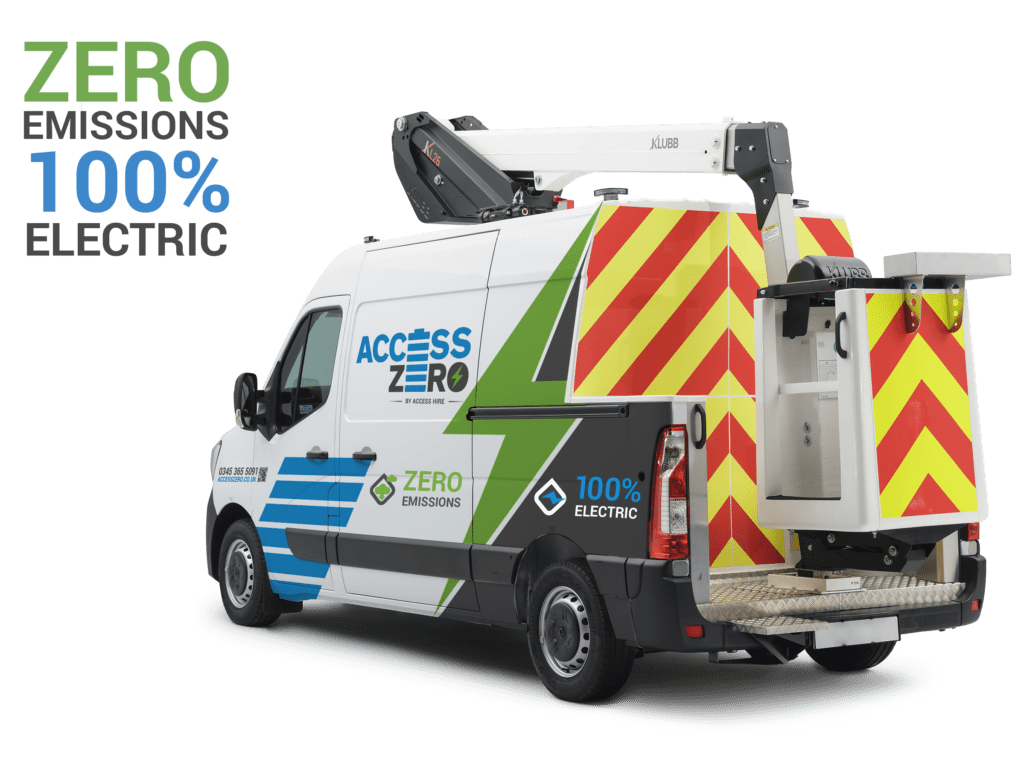
1. Reduced emissions
The construction, operation and maintenance of infrastructure are responsible for roughly 16% of the UK’s total carbon emissions ². The machinery and vehicles used during projects is an important part of this – yet these emissions are often seen as inevitable.
Fully-electric Van Mounted MEWP solve that problem – producing zero emissions and requiring far less energy to run. This helps radically reduce the overall output of mobile workforces. It also makes projects easier to run in densely populated urban areas where Ultra Low Emissions Zones (ULEZ) are more common ³ .
2. Easier budgeting
According to recent reports, 7 in 10 UK councils are struggling to finance their net-zero transition. ⁴ This puts pressure on leaders, even with extra funding from the government. And since green options are generally seen as more costly, many contractors struggle to afford electric vehicles.
This is why Access Zero offers a fully inclusive maintenance solution, enabling local authorities to hire the latest access platform technology in confidence and easily forecast their cash flow due to not having to account for any service or maintenance costs. This means opting for electric Van Mounted MEWP doesn’t mean sacrificing other green initiatives or creating an unmanageable budget deficit.
3. Minimise noise pollution
Noise pollution is less widely publicised than air pollution, but it is just as harmful to the health of the local population. Researchers estimate that excessive noise costs the UK economy £20 billion each year. And Councils have a clear mandate to reduce noise from infrastructure projects – especially in urban areas.
Electric Van Mounted MEWP operate silently. This removes a huge source of on-site noise emissions and makes the environment more pleasant for both workers and civilians.
Four Ways Exceptional Service Keeps Your Project Moving
Delays are the bane of construction and infrastructure projects. Recent research reveals that roughly 10% of activities on the average site are performed out of sequence¹, with over two-thirds of projects running over budget by more than 10% – and larger projects routinely taking 20% longer than anticipated.
How can these challenges be overcome? One simple solution is to choose the right partners. Suppliers of strategic equipment like Vehicle Mounted Access Platforms (VMAPs) and mobile welfare units should not only offer best-in-class products – they should be expected to support you throughout the project.
Here are four ways this can help avoid delays:
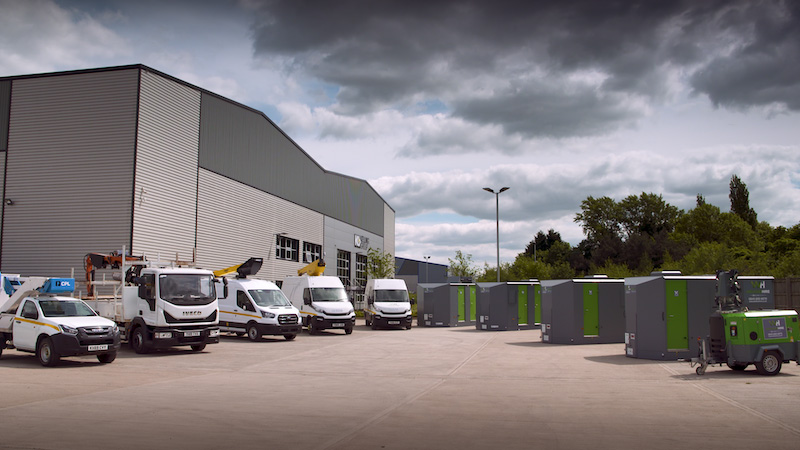
1. Availability
Delivering, collecting and servicing vehicles can be a serious logistical challenge, if your provider has limited access to specific areas and will take a long time getting to your site.
This limits the flexibility of your site, and leaves you vulnerable to unexpected delays. But Access Hire and Welfare Hire each provide both service and deliveries across the entire country. With the largest fleet in the country and an unparalleled delivery network, we are able to get you what you need faster and more reliably than other providers.
“We’ve never been let down with a collection or delivery”
Kelling Group Customer
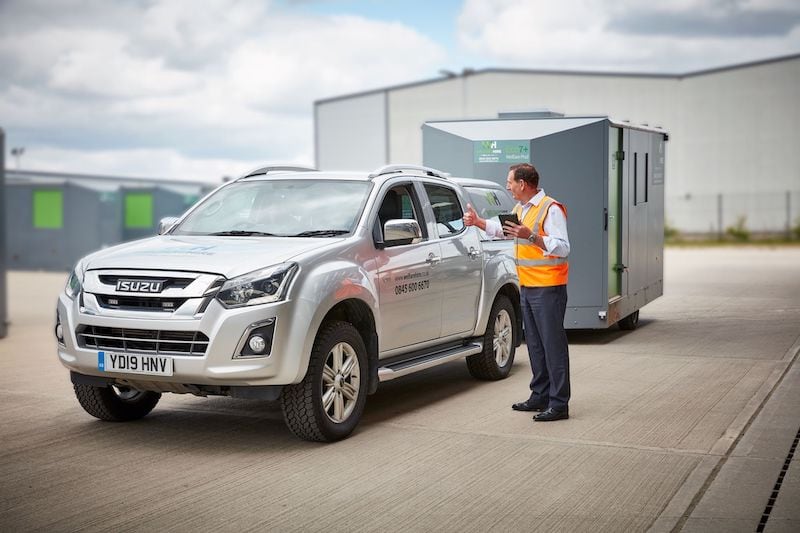
2. Specialist knowledge
Vehicle mounted access platforms, mobile welfare units, lighting towers – these are very technical pieces of equipment which require in-depth specialist knowledge. Without that knowledge, it will take longer to service the vehicle – and any issue you experience is more likely to recur.
As specialists in our chosen fields, both Welfare Hire and Access Hire pride ourselves not only on providing the best equipment, but the highest level of expertise. Our team is made up of specialists who know the ins-and-outs of the equipment we offer – to ensure we can offer the best service possible.
We offer detailed advice to our partners at the start of every hire, to ensure the right equipment is selected – and used to its full potential. Then we provide assistance throughout the entire process, so that issues are resolved faster.
“They provide us with high quality products and service each and every time, taking the hassle out of welfare provision.”
Kelling Group Customer
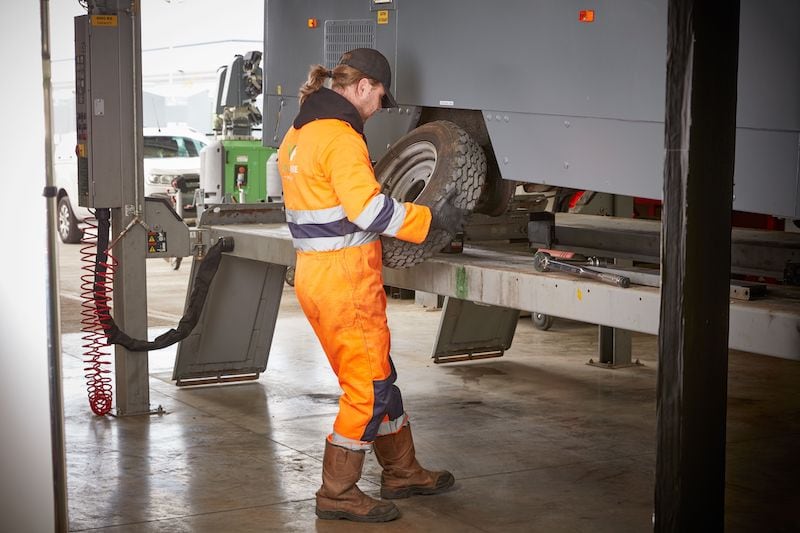
3. Fully maintained equipment
Maintenance is essential for key strategic equipment. If your mobile welfare units or vehicle mounted access platforms suddenly stall or experience a mechanical fault, it can completely derail a day’s schedule, as you are unable to complete tasks involving the vehicles. And even if the vehicles do still function, you may be breaking regulatory requirements by using them without proper maintenance.
At Kelling Group, we pride ourselves on avoiding such problems. Both Access Hire and Welfare Hire include rigorous quality checks as part of our standard service offering. This creates a consistent level of quality, ensuring every mobile welfare unit, lighting tower and vehicle mounted access platform we provide is properly maintained- and supports your project, rather than disrupting it.
“The vehicles are maintained and serviced to a very high standard. This is vital to us from a safety and regulatory perspective.”
Kelling Group Customer

4. A complete support network
When problems do arise with your strategic equipment, they can often be dealt with very quickly – as long as there is proper support on-hand. That’s why both Access Hire and Welfare Hire benefit from a complete support network – from service teams in the office to engineers in the field.
Access Hire boosts this with a strategic network that enables us to provide 24/7/265 support. So even if your infrastructure project works through the night or early morning, you’ll have access to fast, responsive support if there’s any issue with your vehicle mounted access platforms.
“The support network is excellent and critically, for our business, available 24/7/365.”
Access Hire Customer
Four Vital Trends For The UK’s Water Sector in 2023 and Beyond
The UK’s water sector is essential to virtually every facet of life. It provides water to 50 million household and non-household consumers every day¹ – employing 127,000 people in the process.²
But from ageing infrastructure to sustainability pressures, the sector faces serious challenges in the coming years. Upgrading and improving water networks will require reliable site setup and key strategic equipment – such as mobile welfare units and lighting towers.
Here are four trends that water faces in 2023 and beyond:
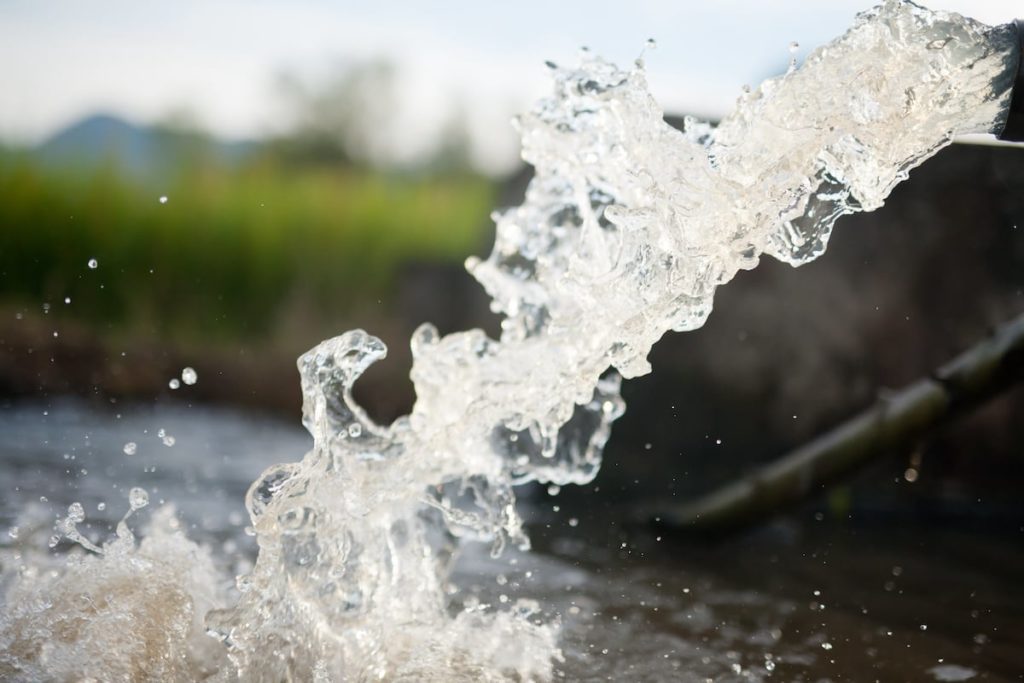
1. Waste and pollution
According to the latest estimates, UK water companies lose an average of 2,923.8 million litres of water per day – equating to 1.06 trillion litres over a year.³ Reports also emerged last year of companies illegally dumping sewage in rivers.⁴ And while companies have reduced leakages by 6% in the last year ⁵, there is still plenty of work to be done.
As demand grows for more sustainable systems, these issues will have to be addressed. Large scale projects will be required to ensure national distribution systems adapt, ensuring waste is reduced and users across the country can reliably access clean water.

2. Justifying rising costs
Inflation has driven up prices across the board – and water is no exception. One in five UK water customers currently says their bill is not affordable.⁶ And when some regions of the country saw their water bills rise more sharply than other areas, there was some pushback against providers.⁷ As a result, there is growing pressure for water companies to justify their costs – and that means improving the experience of customers.
Ofwat recently said that investment would be 2 or 3x higher in the next regulatory period than previous periods.⁸ The cost of these investments will realistically be passed onto customers; providers will therefore have to ensure they make the right investments that lead to more reliable supplies, better service levels and improved environmental impact.
A key part of this is ensuring maintenance costs are under control. Whether it’s tower lighting units or mobile welfare units, choosing a partner that can provide best-in-class equipment with reliable service will ensure projects are not delayed – and customers ultimately experience as little disruption as possible.

3. Sustainable processes
Sustainability is one of the defining challenges of our time, and the UK’s water networks will have to be heavily altered to ensure they meet long-term environmental requirements. This transition will involve a great number of projects, and each one of those individual projects will be scrutinised in terms of environmental impact.
The water industry will therefore have to be very careful about choosing the right partners and equipment that reflect its environmental goals. Whether it’s the materials used or the mobile welfare units employed on site, every aspect of a project’s value chain must minimise carbon emissions and all other negative externalities.

4. Climate unpredictability
The UK’s unpredictable weather has always created a challenge for water providers. But as climate change occurs and weather patterns become even more erratic – not to mention more extreme – these challenges are getting worse.
In 2022, severe heat waves forced providers to ask customers to ration their water usage.⁹ Incidents like this are likely to become more frequent – as is disruptive flooding. Compounded by projections that the UK population is likely to increase by 20% over the next two decades,¹⁰ navigating increasing weather uncertainty and risk will be a defining challenge for the water sector.
While innovations like demand management will no doubt contribute, water companies will inevitably have to become more agile and flexible in their responses to weather-related problems. This requires partners like Welfare Hire that can assist in faster, more reliable servicing, providing strategic equipment across the country with unparalleled speed and expert support.
2.https://www.euskills.co.uk/about/our-industries/water/
3. https://www.bluefieldresearch.com/gripped-by-polarization-u-k-water-needs-stability-u-k-water-sector/
4.https://www.bbc.co.uk/news/uk-60040162
5.https://www.bbc.co.uk/news/science-environment-64052740
6.https://www.ofwat.gov.uk/regulated-companies/resilience-in-the-round/long-term-potential-domestic-demand-management-water-sector/ 7.https://www.bbc.co.uk/news/uk-england-nottinghamshire-60750729
8.https://utilityweek.co.uk/ofwat-pr24-could-see-three-fold-investment-boost/
9.https://www.telegraph.co.uk/news/2022/07/13/uk-weather-use-water-essential-purposes-households-told/
10.https://www.ofwat.gov.uk/regulated-companies/resilience-in-the-round/long-term-potential-domestic-demand-management-water-sector/
Why Training Is Essential To Operate Vehicle Mounted Access Platforms Safely
Vehicle Mounted Access Platforms (VMAPs) are an essential part of many infrastructure projects. But without the proper training, they carry a number of safety risks which can lead to delays, hazards – and potentially serious injuries.
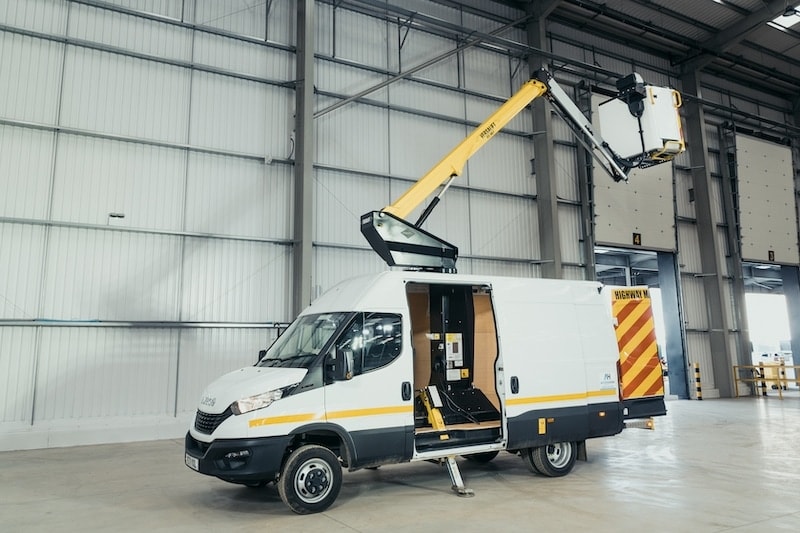
What are the vehicle mounted access platform safety risks?
Working from heights is always considered a health and safety risk; 123 UK workers died in 2022 as a result of falls¹. Whilst Vehicle Mounted Access Platforms present a safe and efficient way of working at height, there are still a number of other safety risks – all of which require operators to be highly trained.
Some of these are related to proper care and maintenance. If not set up or secured properly, the platform can be unstable – potentially causing it to tip over. Equally, if the vehicle is not properly maintained, sudden machinery failures can lead to accidents.
Other risks relate to operators’ skill and knowledge of the vehicle. If the operator does not have proper control over the vehicle mounted access platform, there is a risk of collision with other vehicles or obstacles – not to mention the risks to the person working on the platform.
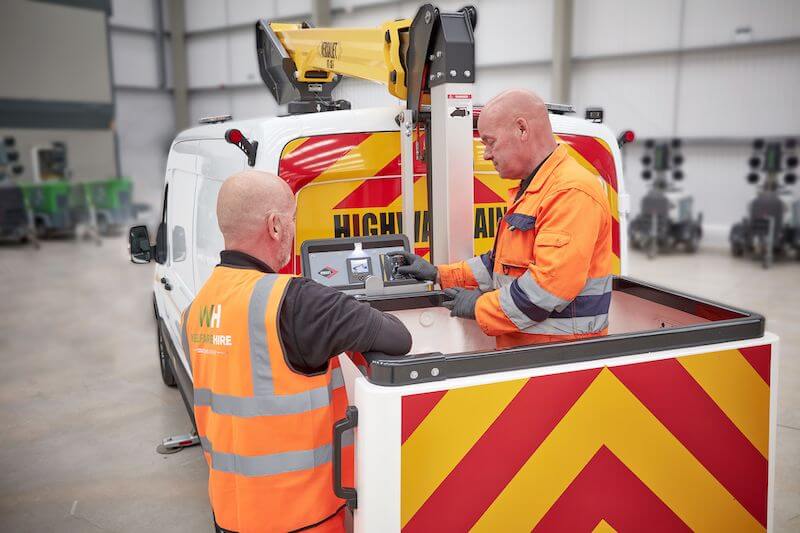
How training mitigates the risk
Comprehensive safety training is not just a matter of legal requirement – it can actually save lives. By ensuring the operator is familiar with the proper safety procedures – as well as protocols for maintaining the equipment and noticing when additional support is required – the right training course will make your operators safer, more confident and more efficient.
Training should include information on how to properly set up and secure the platform; how to properly use the controls and safety features; and how to safely access and work from the platform. Additionally, safety training can help to prevent accidents and injuries by teaching operators how to recognize and avoid potential hazards.
But simply memorising this information is not enough – it needs to be used. And that is where most training programmes run into a serious problem.
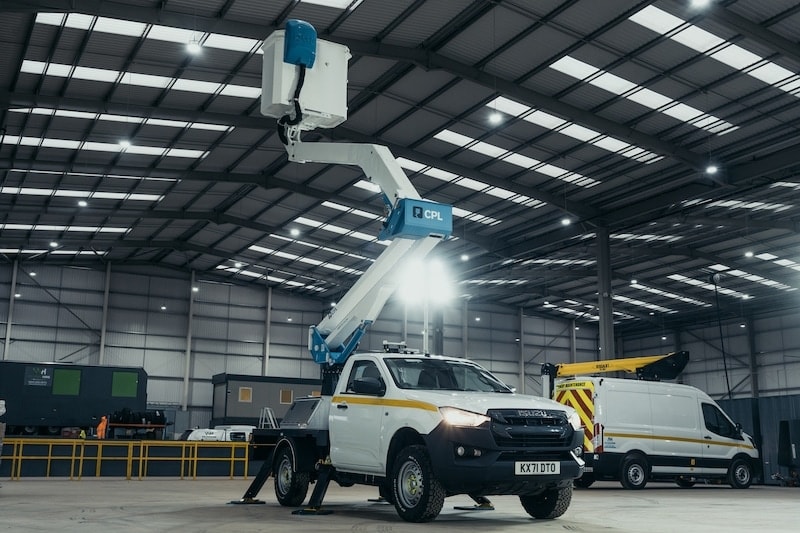
Why training needs to use real vehicles
Sitting in a classroom or at a computer is one thing; making decisions in the moment is another. Just 12% of employees say they have been able to apply what they learned in training courses to their real-world job².
Why? Because they learn in an artificial environment divorced from their real day-to-day work. A trainee may take in all of the information, but it is less likely to stick – and far less likely to become a lasting habit that ensures consistently safe operation.
This is a common problem with operator training. While International Powered Access Federation (IPAF) training is the industry gold-standard, few organisations are able to offer the programmes using vehicle mounted access platforms – which is exactly why Access Hire stepped up.
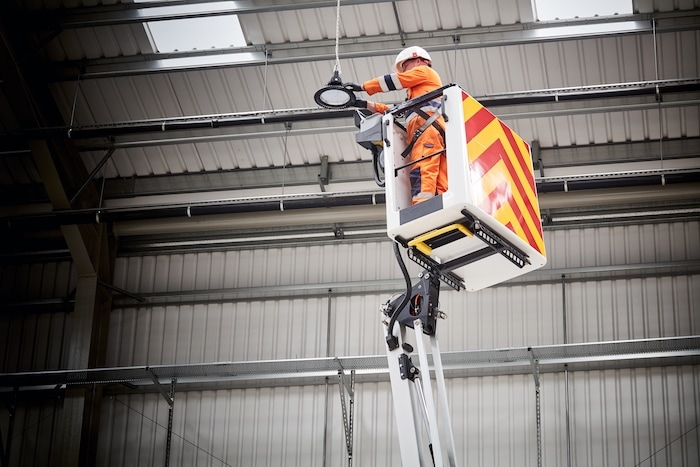
Access Hire helps your site stay safe
We now offer full IPAF training onsite using our market leading range of Vehicle Mounted Access Platforms. Not only does this ensure operators are properly accredited – it gives them the opportunity to learn skills specific to the vehicle they’ll be using on site.
This makes the training more relevant and helps them memorise the information more effectively. As a result, safety practices become real habits. The operator follows every safety protocol and operates the vehicle properly without even thinking – and that is what you need to keep your site safe.
Why Improving Air Quality On Construction Sites Starts With Equipment
Construction has an air quality problem. While 97% of people said that air quality is an “extremely or very important environmental health concern”, research shows that construction sites are responsible for 23% of all air pollution.
But how can leaders solve this problem? And what role does equipment – like innovative mobile welfare units – have to play?
The problem is getting worse
Despite great efforts made by the industry, construction and manufacturing’s share of carbon emissions has actually increased in recent years relative to other sectors. Leaders need to see air quality and sustainability as inherently linked: reducing their emissions should go hand-in-hand with improving air quality. But this is where things get difficult.
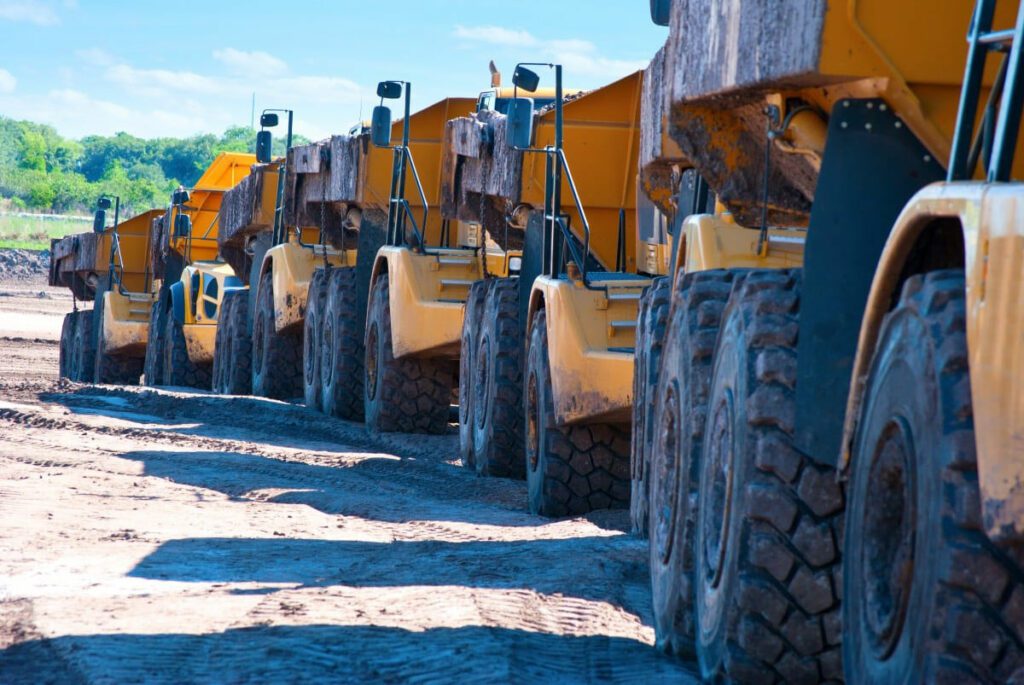
Why does construction struggle?
Many people assume the air quality problems produced by construction sites are the result of dust from activities like demolition but this actually accounts for around 1% of sites’ air pollution. Most air quality problems are a direct result of the machinery used onsite – diesel diggers, generators and the like. Construction businesses need to find newer, greener energy sources – such as innovative mobile welfare units or eco-friendly lighting towers.
But in most cases, replacing this equipment is perceived as difficult. While a majority of construction professionals say they have the information and skills to improve air quality and reduce carbon emissions, fewer said they had the necessary tools.
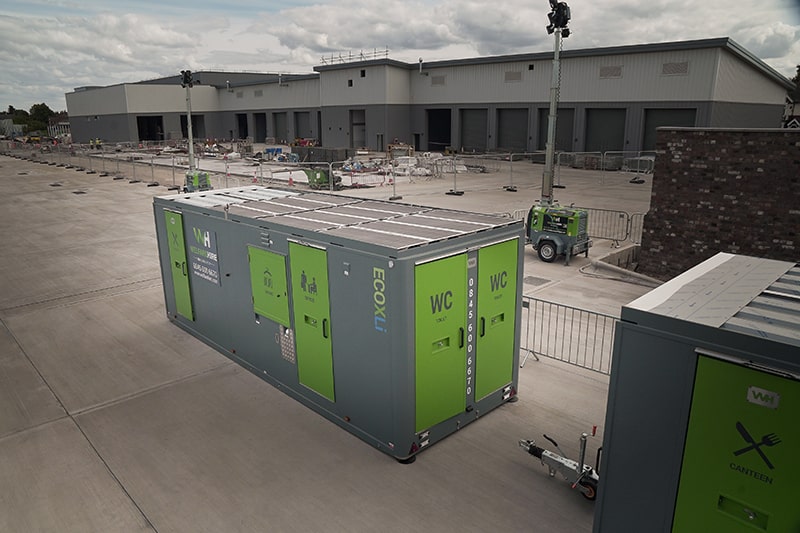
Welfare Hire provides the tools you need
At Welfare Hire, we believe it is the duty of suppliers to help construction reach its sustainability goals. That is why we’ve invested so heavily in hybrid-powered mobile welfare units and lighting towers. And it is why we recently joined the Plant Commitment Charter.
The Plant Commitment Charter was created by the Supply Chain Sustainability School (SCSS) to encourage suppliers in the construction sector to commit to key sustainability goals. As one of just 21 signatories, we have committed to provide evidence of our progress regarding measurement and reporting; engagement; training and education; and innovation. This is all based on standards the SCSS has developed.
Ultimately, we believe these kinds of external commitments are essential to improve our industry. Not only do they ensure we are held to a high standard; they will help us deliver a better service to our partners, and provide the tools they need to create a cleaner working environment that maintains air quality.
Access Hire Industry Insights: Four Key Trends for Telecommunications in 2023
Telecommunications is one of the UK’s most essential and fastest growing industries. But innovation has often been slowed by legacy infrastructure that is massively outdated and complex.
In the coming years, we will see these challenges finally resolved. The UK government has earmarked £5 billion for “Project Gigabit” – its attempt to ensure the expansion of high-quality broadband into hard-to-reach areas¹ – as well as a slew of further investments to promote innovation and security in the sector.
Some estimate the cumulative impact of these projects could result in a £120 billion boost to the UK economy over the coming 15 years². Value will be produced at every step of the process, from hiring innovative access platforms to creating thousands of new jobs.
In this report, we explore four key trends that will drive this growth in 2023.
Four telecoms trends in 2023

1. The 5G rollout
The expansion of 5G networks will accelerate during 2023, with EE claiming it will deliver 5G to 90% of the UK’s geographic area by 2028³. This looks increasingly plausible: UK comms regulator Ofcom says the number of 5G base stations in the UK doubled in 2021, with coverage now between 67-77% (up from 42-57% last year),⁴ – and we should expect this number to grow rapidly.
Much of this is thanks to the Government’s £200 million 5G Testbed and Trials programme.⁵ The government has made clear its intention to make the 5G roll out as widespread and impactful as possible – largely by “cutting red tape” to enable innovation. This includes simple factors like increasing competition, as well as more “out there” proposals, such as using “Street furniture” like lampposts as 5G towers.⁶
Not only does 5G offer increased speed, reduced latency and greater reach – there are clear ESG benefits too. It is up to 90% more efficient than 4G in terms of energy consumption per unit of traffic (W/Mbps),⁷ and the ongoing rollout could produce huge energy gains across the country’s telecoms infrastructure.
But this is where the 5G rollout gets more complex
The reality is, providers will not be relying on 5G any time soon. Despite the rollout, networks will still need a robust 4G infrastructure for many years. While Vodafone will phase out 3G in 2023,⁸ it will continue to simultaneously invest in its 4G infrastructure – however fast 5G access expands.
Equally, 5G is not the only type of network most want access to. 45% of enterprise businesses are concurrently testing or deploying Wi-Fi 6 and 5G for their advanced wireless initiatives. Indeed, a recent Deloitte survey found that fully 98% of respondents expected their organisation would be using both technologies within two years.⁹
Perhaps tellingly, countries that report the highest levels of 5G pilots and deployments also report the highest levels of WI-FI 6 pilots.¹⁰
2. Major fibre projects
In September 2022, CityFibre announced that its full fibre infrastructure project – in partnership with Vodafone – had been successfully deployed by more than two million homes.¹¹ But this is just the start. CityFibre expects the project to see full fibre-optic broadband deployed in 8 million homes by 2025 – creating 4,000 jobs in the process.¹²
There is competition though. In may December 2022, Openreach announced 12 new locations where it plants to deliver gigabit-capable technology – with plans to reach 4 million new homes each year. Virgin Media soon followed suit, announcing its intention to upgrade its entire fixed network to full fibre by 2028.
These projects will be highly complex, requiring powered access equipment to successfully deploy the necessary infrastructure. But the net result will be a huge increase in both supply and demand.
A report from the FTTH Council Europe predicted the total number of fibre subscriptions in the UK to increase to 18.5 million by 2026, with the overall penetration of fibre reaching 63.1%.¹³
Are targets too ambitious?
While the above figures are promising, the infrastructure required for such coverage will not be easy – requiring much strategic and technical support. The UK government has found this out the hard way. In a recent report, they were forced to break their manifesto pledge to achieve nationwide fibre coverage by 2025 – with the date now moved back to 2030.¹⁴

3. Reinforcing telecoms security
Following the passage of the Telecommunications Security Act last year, we should expect increased efforts to reinforce the security and safety of the UK’s telecoms networks. With increasingly powerful connectivity, the dangers of cyber attacks have intensified. Both the UK government and private companies are highly incentivised to ensure networks are maximally robust.
There will also be an important balance to strike between increasing security and ensuring efficient competition. The government has launched a £250 million initiative to build more competitive, innovative and diverse supply chains – reducing the reliance on a small handful of massive equipmark firms.¹⁵ However, this may create conflict between providers’ desire for security and their desire for economic efficiency.
The government has already enshrined a law to strip out ‘high-risk’ suppliers’ tech from networks,¹⁶ which will have a huge impact on security. But actioning this may not be so simple. BT has estimated that it will take 5 years and £500 million to remove Huawei technology from its networks.¹⁷
4. Focus on values
Overall, network performance is improving. Broadband and mobile complaints are down despite increased usage,¹⁸ and the various projects we’ve discussed thus far show how the telecoms sector is innovating. But that does not mean providers are safe from competition.
64% of consumers are likely to switch phone providers within the next three years if telecoms don’t invest and act fast.¹⁹ This means there is growing pressure on companies to innovate -and clear rewards for those that are able to do so fast.
In the coming year and beyond, we expect to see telecom companies looking to go beyond providing great service. They will increasingly have to position themselves as adding extra value beyond the traditional bounds of telecoms – and this will ramp up significantly throughout 2023.
BT is a prime example: they recently declared that they would only back “responsible tech” in the future, with an emphasis on climate change, diversity and inclusions.²⁰ This will run through their entire business, informing everything from the access platforms they lease to their commitment to a circular economy model.
While other businesses may take differing approaches, the takeaway is clear: telecoms companies must increasingly be more than just telecoms companies in order to survive.
2.https://telecoms.com/opinion/embracing-government-incentives-how-can-telcos-innovate-beyond-the-bare-minimum/
3.https://www.techradar.com/uk/news/ee-promises-to-cover-90-of-uk-with-5g-by-2028
4.https://www.ispreview.co.uk/index.php/2022/12/ofcom-gigabit-broadband-covers-70-of-uk-as-5g-hits-67-77.html
5.https://www.gov.uk/guidance/5g-testbeds-and-trials-programme
6.https://telecoms.com/513387/uk-government-moves-to-improve-telco-access-to-street-furniture/
7.https://www.ericsson.com/en/blog/3/2021/1/achieving-sustainability-with-energy-efficiency-in-5g-networks
8. https://telecoms.com/513093/vodafone-uk-will-start-switching-off-3g-next-year/
9. https://www2.deloitte.com/content/dam/Deloitte/tw/Documents/technology-media-telecommunications/rp20211228-2022-tmt-trend.pdf
10. https://www2.deloitte.com/content/dam/Deloitte/tw/Documents/technology-media-telecommunications/rp20211228-2022-tmt-trend.pdf
11. https://cityfibre.com/news/cityfibre-network-passes-2-million-homes-on-its-march-toward-8-million
12. https://news.yahoo.com/openreach-creates-4-000-jobs-000324197.html
13. https://www.ftthcouncil.eu/knowledge-centre/all-publications-and-assets/246/ftth-forecast-for-europe-market-forecasts-2021-2026
14. https://www.techradar.com/uk/news/uk-government-pushes-back-full-fibre-coverage-target-to-2030
15. https://www.gov.uk/government/publications/5g-supply-chain-diversification-strategy/5g-supply-chain-diversification-strategy
16. https://www.computerweekly.com/news/252509705/UK-government-enshrines-law-to-strip-out-high-risk-suppliers-tech-from-networks
17. https://www.computerweekly.com/news/252477617/BT-to-take-half-billion-pound-hit-on-Huawei-kit-replacement
18.https://telecoms.com/513348/ofcom-says-broadband-and-mobile-complaints-are-down-across-the-board/
19.https://www.cityam.com/qa-what-are-the-big-lessons-for-telecoms-looking-into-2022/
20.https://www.heraldscotland.com/news/19910879.bt-commits-responsible-tech-greener-future/
Why Training Is Essential For Organisations
The International Powered Access Federation (IPAF) is an organisation that promotes the safe use of Mobile Elevated Work Platforms (MEWPs), such as Vehicle Mounted Access Platforms (VMAPs).
With over 1,500 members across 76 countries, it is the international authority on safety best practices – which is why Access Hire is proud to announce we have become an official IPAF training provider.
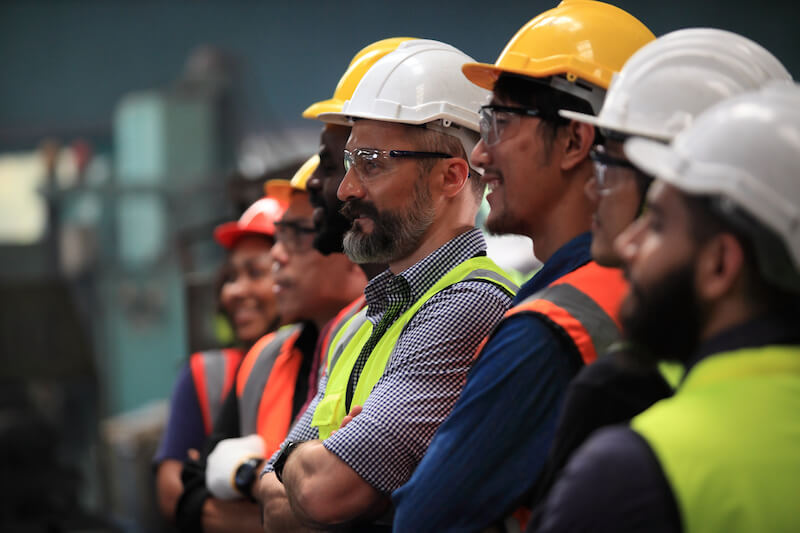
Why is IPAF training important?
MEWPs are large pieces of equipment that can cause serious damage if misused. That is why operators must undertake rigorous training to ensure they know how to operate the equipment effectively – and keep themselves and their colleagues safe.
Ensuring operators are highly trained is not just about compliance, it is about creating a culture of safety and demonstrating your commitment to the workforce and your customers.
Well trained employees can also work independently and make decisions that can improve their overall efficiency. They are able to identify and solve problems quickly, preventing costly errors and downtime.
IPAF training courses are conducted by authorised training centres and culminates in the awarding of a PAL Card (Powered Access Licence) to the trained individual. This training is mandatory for anybody who operates a MEWP, and the PAL Card remains valid for 5 years.
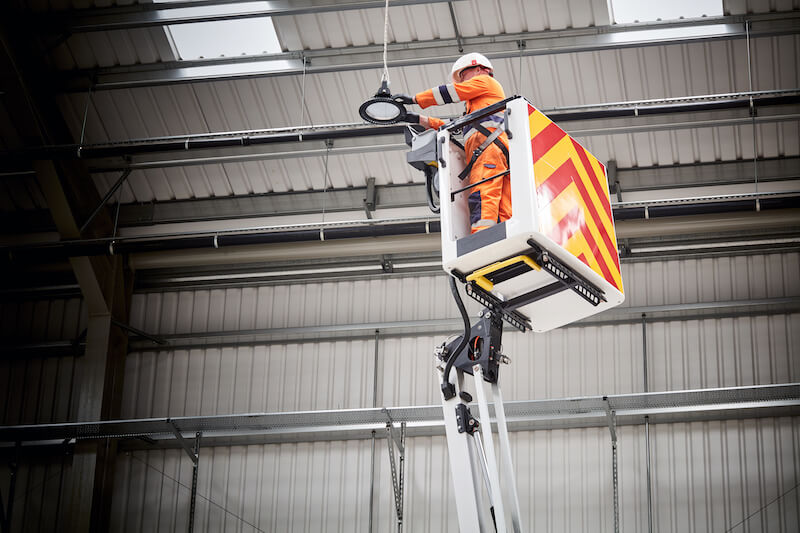
Access Hire lets you train with a VMAP
While IPAF training is mandatory for Vehicle Mounted Access Platform (VMAP) operators, the majority of training providers do not carry out their training using VMAPs. This is not inherently problematic, but it does mean that trainees lose out on vehicle-specific tips which could be vital.
As a market leading provider of Vehicle Mounted Access Platforms, Access Hire felt this needed to change. Trainees can now undertake 1b static boom training on the specific type of VMAP they will use on-site, enabling them to benefit from our experienced trainers’ specialist VMAP knowledge.
Trainees will learn:
- Key regulations, legislations, standards
- How to identify risks and hazards
- How to identify machinery parts
- How to undertake a pre-use inspection of the vehicle and platform
- Safe machine operating methods
- How to identify common faults
How Eco-Friendly Welfare Units Can Help You Cut Costs In 2023
Most businesses would love to focus on sustainability in the new year. But with the ongoing recession, driven by skyrocketing energy prices, the majority will be forced to place all their attention on simply managing their budgets.
But what if the two weren’t mutually exclusive? What if using more sustainable, eco-friendly equipment – such as hybrid-powered mobile welfare units – could also help keep your costs under control?
Well, that actually is the case. Introducing more sustainable mobile welfare units to your site is not just the right thing to do for the environment – it’s also the best way to reduce costs.
Here are three ways eco-friendly welfare units help your bottom line:
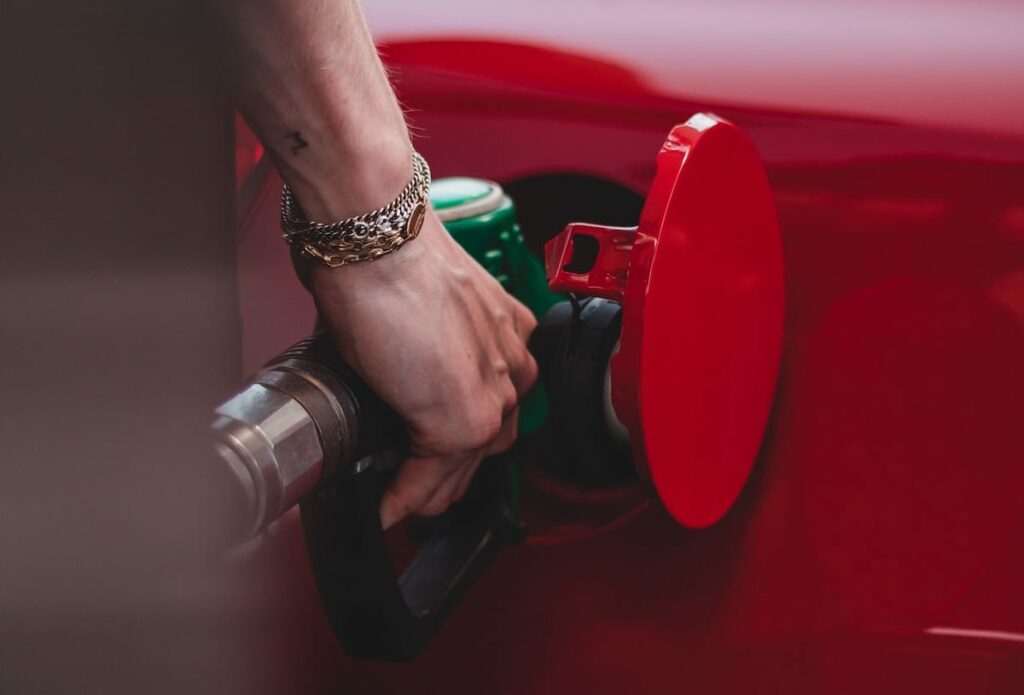
Less fuel, more profiT
Hybrid power is generally lauded as an ecological fix: it helps reduce emissions and produce cleaner, greener construction sites. But hybrid power also has the potential to cut your energy costs – and increase your bottom line.
Welfare Hire’s mobile welfare units are powered by solar energy first. If solar energy isn’t available, the power is drawn from the Lithium battery, which is also recharged from the solar panels. With power drawn from the generator only as a last resort, the need for fuel is dramatically reduced. As a result, our units not only lower CO2 emissions – they achieve 15x fuel cost reductions.

More resilient to shocks
The last 12 months proved just how problematic relying on traditional energy sources can be. From the Ukraine war to the ban on red diesel, sites saw their fuel costs suddenly increase – and it was all out of their control.
By reducing contractors’ fuel consumption, Welfare Hire’s eco-friendly mobile welfare units and lighting towers also increase their resilience to sudden market shocks. When fuel prices shoot up, our partners are prepared – because they need so much less of it.

ESG pays
Whether you’re looking to attain investment or simply win big contracts, Environmental, Social and Governance (ESG) scores have a material impact on your financial situation. More environmentally friendly lighting towers or welfare units will improve your score – and therefore your overall financial health.
